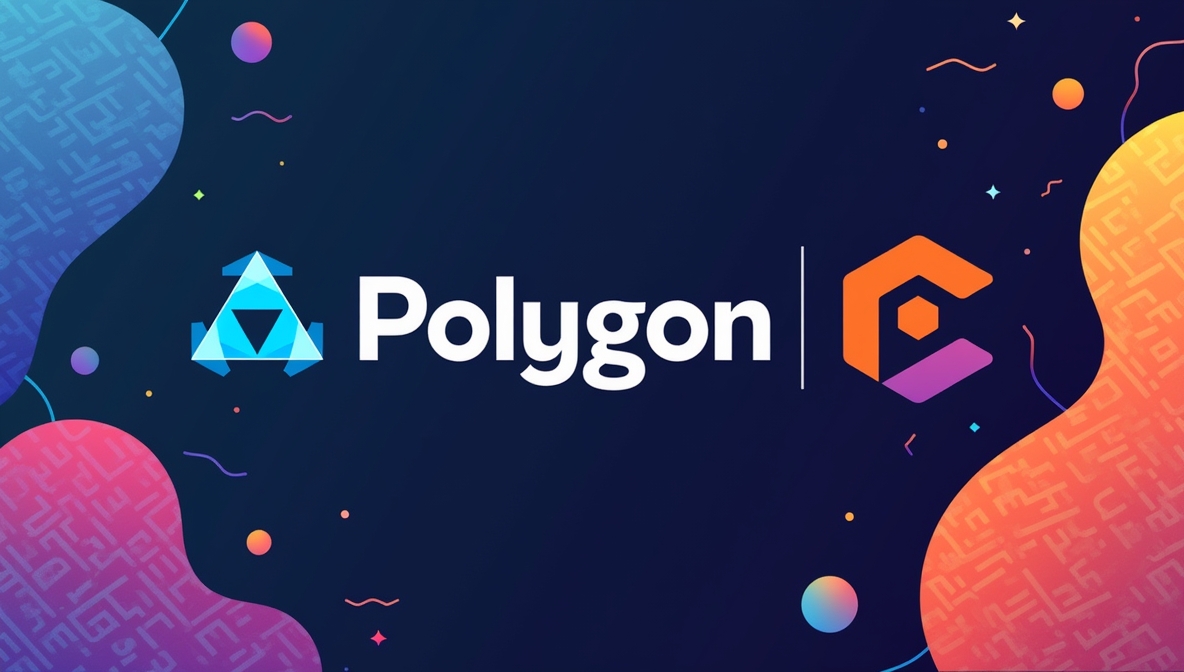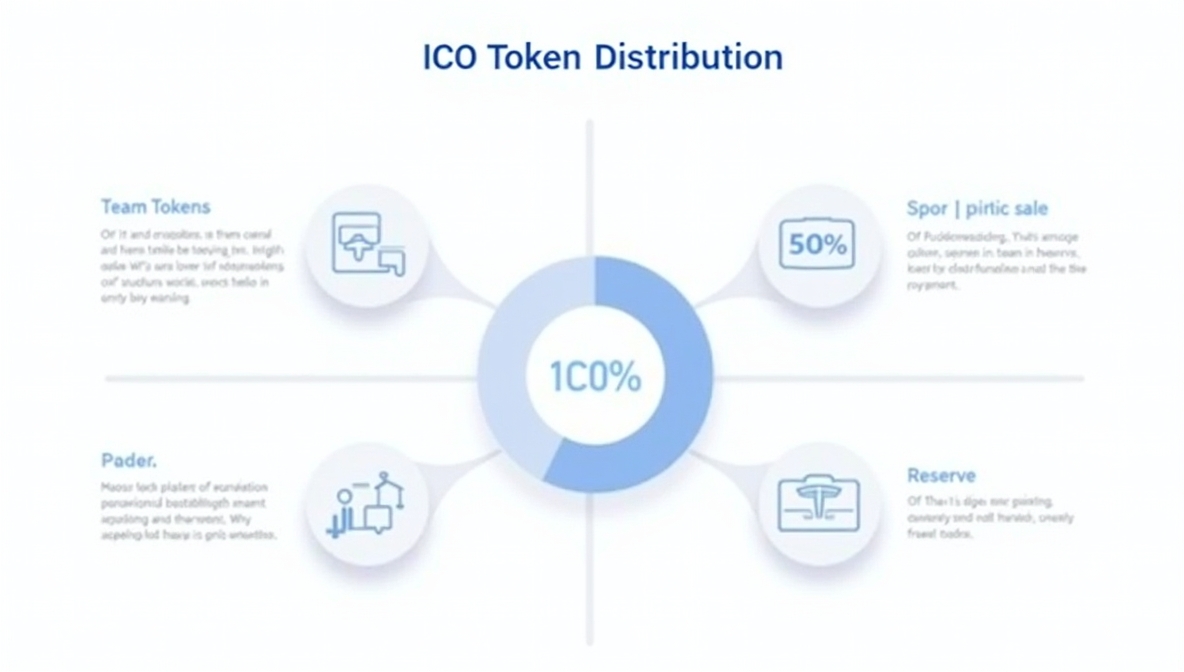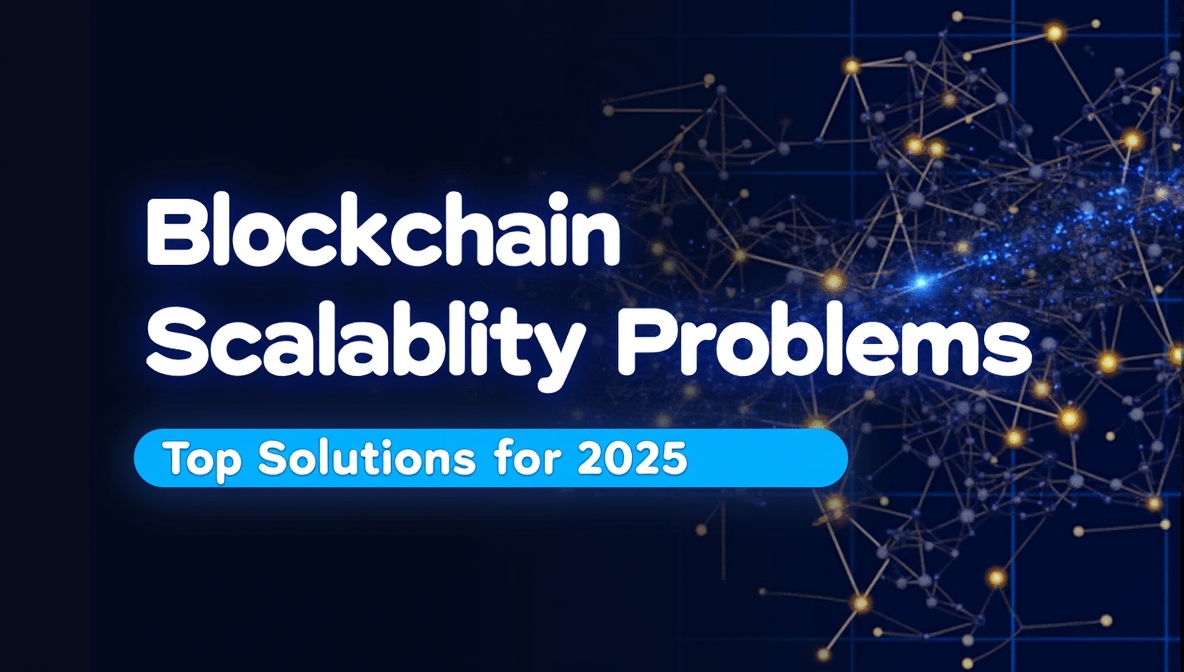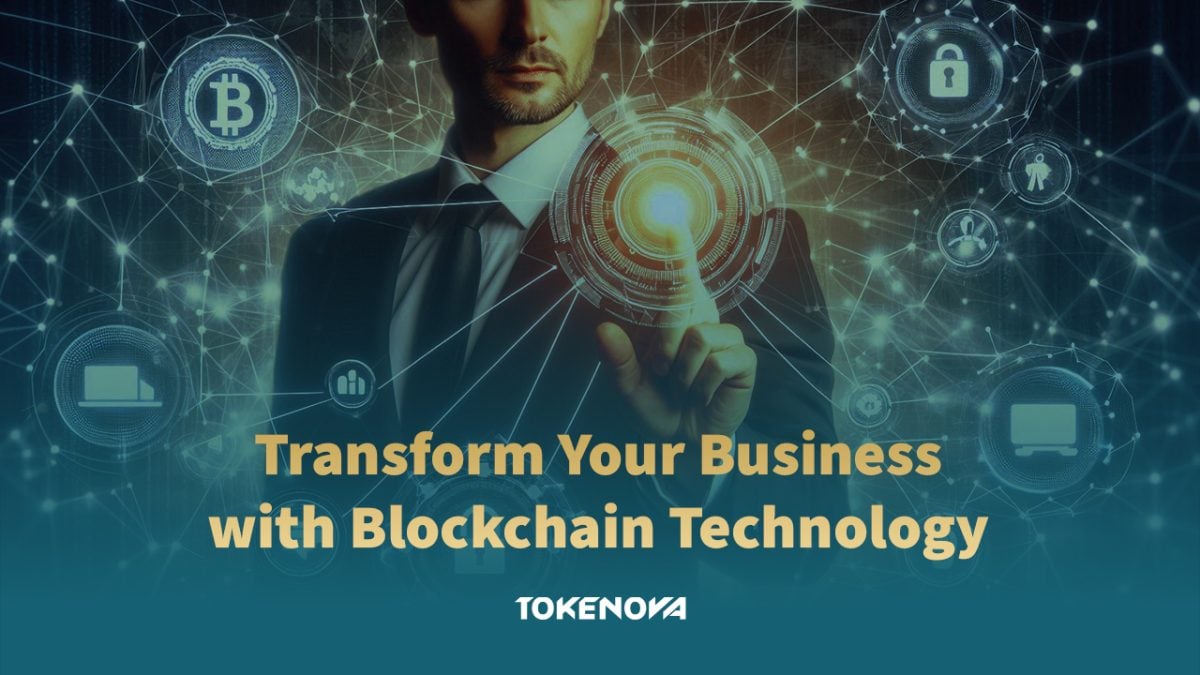Imagine a global marketplace where your innovative startup can secure funding from enthusiasts across continents within days, not months. Picture investors having the flexibility to buy, sell, or trade their stakes in your venture effortlessly, all while enjoying unparalleled transparency and security. Welcome to the transformative world of crowdfunding and tokenization.
In 2025, these two financial innovations are converging to redefine how projects are funded and how investments are managed. Crowdfunding democratizes access to capital, enabling entrepreneurs to tap into a vast pool of supporters, while tokenization leverages blockchain technology to enhance liquidity, security, and inclusivity. This comprehensive guide delves deep into the symbiotic relationship between crowdfunding and tokenization, offering you invaluable insights into their combined potential to revolutionize global fundraising and investment landscapes.
Whether you’re an entrepreneur seeking to launch your next big idea, an investor looking to diversify your portfolio, or simply curious about the future of finance, this article provides a clear, detailed roadmap to understanding and leveraging these cutting-edge financial tools. From the foundational principles of crowdfunding and tokenization to the latest trends, challenges, and real-world applications, we cover it all. By the end of this Tokenova, guide, you’ll be equipped with the knowledge to navigate and thrive in this dynamic financial ecosystem.
Understanding Crowdfunding
Crowdfunding has emerged as a powerful alternative to traditional financing, breaking down barriers and democratizing access to capital. At its core, crowdfunding allows individuals or organizations to raise funds for a project, venture, or cause by collecting small contributions from a large number of people, typically via online platforms.
The Evolution of Crowdfunding
Crowdfunding’s journey began with simple donation-based models, evolving through reward-based systems, and now embracing equity and debt-based models. Here’s a closer look at its evolution:
- Donation-Based Crowdfunding: The earliest forms of crowdfunding were centered around charitable causes and personal needs. Platforms like GoFundMe enabled individuals to raise money for medical expenses, disaster relief, or community projects, relying solely on the generosity of donors without offering any financial return.
- Reward-Based Crowdfunding: Platforms such as Kickstarter and Indiegogo revolutionized crowdfunding by introducing reward-based models. Backers receive tangible rewards or early access to products in exchange for their contributions. This model has been particularly effective for creative projects, tech gadgets, and innovative products, fostering a strong community of supporters who feel invested in the project’s success.
- Equity-Based Crowdfunding: This model allows investors to receive equity shares in a company in exchange for their investments. Platforms like SeedInvest and Crowdcube have made it possible for startups to access a wider pool of investors beyond traditional venture capitalists. This democratization of investment opportunities has opened doors for both entrepreneurs and investors, fostering a more inclusive financial ecosystem.
- Debt-Based Crowdfunding (Peer-to-Peer Lending): Platforms like LendingClub and Prosper facilitate loans between individuals or businesses and investors, bypassing traditional banking systems. This model offers borrowers more flexible terms and investors higher returns compared to traditional savings accounts or bonds.
Traditional Crowdfunding Models and Their Limitations
While traditional crowdfunding has transformed fundraising, it comes with its own set of challenges:
- Geographic Constraints: Many crowdfunding platforms are region-specific, limiting the reach of campaigns to local or national audiences. This can restrict the potential pool of backers and limit the scalability of projects.
- Regulatory Hurdles: Equity and debt-based crowdfunding are subject to complex regulatory requirements, which can vary significantly across jurisdictions. Navigating these regulations can be time-consuming and costly for both platforms and campaign creators.
- Liquidity Issues: Traditional equity crowdfunding often lacks liquidity, meaning investors may have to wait years before seeing any returns on their investments, typically only achievable through events like acquisitions or IPOs.
- Trust and Transparency: Ensuring transparency and building trust between campaign creators and backers can be challenging. Without robust verification processes, there is a risk of fraudulent campaigns or mismanagement of funds.
Tokenization addresses many of these limitations, offering solutions that enhance the efficiency, accessibility, and security of crowdfunding.
What Is Tokenization?
Tokenization is the process of converting rights to an asset into a digital token on a blockchain. These tokens can represent ownership, participation, or any other right associated with the underlying asset. Tokenization leverages blockchain technology to provide a secure, transparent, and efficient way to manage and transfer these digital assets.
The Essence of Digital Assets
Digital assets can encompass a wide range of items, from physical assets like real estate and art to intangible assets like intellectual property and digital goods. In the context of crowdfunding, tokenization can represent:
- Equity Tokens: Represent ownership shares in a company or project.
- Utility Tokens: Provide access to a product or service within a specific ecosystem.
- Security Tokens: Function similarly to traditional securities, offering rights to dividends, profits, or other financial benefits.
- Non-Fungible Tokens (NFTs): Represent unique assets, often used for digital art, collectibles, or exclusive access rights.
By tokenizing these assets, projects can offer fractional ownership, enabling a broader range of investors to participate with smaller investments. This fractionalization democratizes access to high-value assets, previously accessible only to institutional investors or high-net-worth individuals.
Blockchain as the Driving Force
Blockchain technology is the backbone of Tokenization in Blockchain, providing a decentralized and immutable ledger that records all transactions. This ensures that token transfers are transparent, secure, and verifiable. Key features of blockchain that facilitate tokenization include:
- Decentralization: Eliminates the need for intermediaries, reducing costs and increasing transaction speed.
- Immutability: Once a transaction is recorded on the blockchain, it cannot be altered or deleted, ensuring data integrity.
- Smart Contracts: Self-executing contracts with the terms of the agreement directly written into code, automating processes like token issuance, distribution, and compliance.
- Transparency: All transactions are publicly accessible, fostering trust and accountability among participants.
For a deeper understanding of blockchain technology, refer to this comprehensive guide by CoinDesk.
Integrating Tokenization into Crowdfunding
Integrating tokenization into crowdfunding represents a significant leap forward, transforming static fundraising models into dynamic, investor-friendly ecosystems. This integration leverages blockchain’s capabilities to enhance traditional crowdfunding, addressing many of its inherent limitations.
A More Inclusive and Efficient Funding Model
Global Accessibility: Tokenization breaks down geographic barriers, allowing projects to reach a global audience of potential investors. This expanded reach not only increases the pool of backers but also diversifies the investor base, enhancing the project’s resilience and potential for success.
Lower Entry Barriers: Traditional crowdfunding often requires substantial initial investments, limiting participation to those with significant capital. Tokenization enables fractional ownership, allowing investors to buy smaller stakes with minimal financial commitment. This inclusivity attracts a broader range of backers, including retail investors who might not have been able to participate otherwise.
Streamlined Processes: Tokenization automates many aspects of crowdfunding through smart contracts. These contracts handle token issuance, distribution, and compliance, reducing the need for manual intervention and minimizing administrative overhead. This efficiency accelerates the fundraising process, enabling projects to reach their funding goals more quickly.
Enhanced Security and Trust: Blockchain’s immutable ledger ensures that all transactions are transparent and verifiable. Investors can track their investments in real-time, reducing the risk of fraud and enhancing trust between project creators and backers. Additionally, tokenization often includes built-in security features, such as encryption and multi-factor authentication, further safeguarding investor assets.
Automation and Smart Contracts
Smart contracts are self-executing contracts with the terms of the agreement directly written into code. They play a pivotal role in tokenized crowdfunding by automating various processes:
- Token Issuance: Smart contracts can automatically issue tokens to investors once specific funding milestones are met, ensuring a seamless and transparent distribution process.
- Governance: Tokens can grant holders voting rights, allowing investors to participate in key decision-making processes. Smart contracts can manage these votes, ensuring fair and transparent outcomes.
- Revenue Sharing: Smart contracts can automate the distribution of profits or dividends to token holders based on predefined conditions, ensuring timely and accurate payouts.
- Compliance: Smart contracts can enforce regulatory compliance by automatically verifying investor eligibility (e.g., KYC/AML checks) and restricting access to certain features based on jurisdictional requirements.
This level of automation not only reduces operational costs but also enhances the overall efficiency and reliability of crowdfunding campaigns.
Real-Time Transparency and Trust
One of the most significant advantages of integrating tokenization into crowdfunding is the enhanced transparency it offers. Every transaction is recorded on the blockchain, providing a clear and immutable record that all participants can access and verify. This transparency fosters trust between project creators and investors, as it ensures that funds are used as intended and that all parties are accountable.
Investor Confidence: Transparent fund allocation and project progress tracking empower investors to make informed decisions. They can monitor how their contributions are being utilized, assess the project’s development, and evaluate its performance in real-time.
Immutable Records: The immutable nature of blockchain records prevents tampering or unauthorized alterations, ensuring the integrity of the data. This feature is crucial for maintaining trust, as it guarantees that all transaction histories are accurate and reliable.
Auditable Processes: Blockchain’s auditability allows for independent verification of transactions and fund usage. This capability is invaluable for regulatory compliance and for building investor confidence, as it provides an additional layer of oversight and accountability.
Unleashing Global Liquidity
Traditional crowdfunding models often suffer from liquidity issues, with investors having limited opportunities to exit their investments. Tokenization addresses this challenge by introducing liquidity channels that allow investors to buy, sell, or trade their tokens on secondary markets.
Secondary Markets: Tokenized assets can be listed on regulated exchanges or decentralized marketplaces, providing investors with the flexibility to liquidate their positions as needed. This liquidity enhances the attractiveness of tokenized crowdfunding, as it reduces the risk associated with long-term investments and offers investors more control over their assets.
Continuous Trading: Unlike traditional equity crowdfunding, where exits typically occur during significant liquidity events like IPOs or acquisitions, tokenized crowdfunding allows for continuous trading. This feature provides investors with greater flexibility to manage their investments and respond to market conditions in real-time.
Price Discovery: The ability to trade tokens on secondary markets facilitates efficient price discovery, reflecting the true market value of the underlying assets. This transparency helps investors make informed decisions based on current market trends and valuations.
A Step Towards Decentralized Finance (DeFi)
Tokenized crowdfunding seamlessly integrates with the broader ecosystem of decentralized finance (DeFi), opening up new avenues for value creation and investment optimization.
Liquidity Pools: Token holders can contribute their tokens to liquidity pools on DeFi platforms, earning rewards or fees in return. This participation not only enhances liquidity but also provides additional income streams for investors.
Yield Farming: Investors can engage in yield farming by staking their tokens in various DeFi protocols, earning yields through interest, governance participation, or other incentive mechanisms. This strategy allows investors to maximize returns on their holdings while contributing to the liquidity and functionality of DeFi platforms.
Borrowing and Lending: Tokenized assets can be used as collateral for loans on DeFi platforms, providing investors with access to capital without selling their tokens. This flexibility enables investors to leverage their assets for further investment opportunities or personal needs.
Interoperability: As DeFi platforms continue to evolve, tokenized crowdfunding tokens can interact with multiple blockchain networks and protocols, enhancing their utility and integration within the broader financial ecosystem. This interoperability fosters a more interconnected and versatile investment landscape, where tokenized assets can be utilized across various applications and services.
Read More: Decoding ICOs: A Simple Guide
Advantages of Tokenized Crowdfunding
Tokenized crowdfunding is not merely an incremental improvement over traditional models; it represents a fundamental shift in how fundraising and investment are conducted. By merging the democratic spirit of crowdfunding with the technological prowess of blockchain, tokenization unlocks a multitude of advantages that redefine the potential of capital markets.
1. Breakthrough Liquidity and Immediate Exit Options
Traditional Limitations: In conventional crowdfunding, investors are often locked into long-term commitments with limited options to exit. Liquidity events like company acquisitions or public offerings are infrequent, leaving investors with illiquid assets that may take years to realize returns.
Tokenization Solution: Tokenized crowdfunding introduces unprecedented liquidity through secondary markets. Investors can trade their tokens on regulated exchanges or decentralized marketplaces, providing immediate exit options and greater flexibility in managing their portfolios.
According to a report by Deloitte, the tokenized securities market is expected to reach $3.6 trillion by 2030, driven by the increasing demand for liquid and tradable digital assets. This surge in liquidity options is poised to attract a broader range of investors, enhancing overall market dynamism.
Impact on Investors and Entrepreneurs:
- Investors: Enhanced liquidity reduces the risk associated with long-term investments, allowing for more dynamic portfolio management and quicker realization of returns.
- Entrepreneurs: Access to a liquid investor base can attract more backers, as investors are more willing to commit funds when they know they can exit their positions easily if needed.
2. Radical Inclusivity and Lower Entry Barriers
Traditional Constraints: Traditional crowdfunding often requires significant initial investments, limiting participation to those with substantial financial resources. This exclusivity can hinder the diversification of investment pools and restrict opportunities for smaller investors.
Tokenization Advantage: Tokenized crowdfunding breaks down investment opportunities into smaller, more affordable units. Fractional ownership allows individuals to invest with minimal capital, democratizing access to high-potential ventures.
Global Inclusivity: By eliminating geographic and socioeconomic barriers, tokenized crowdfunding invites a diverse array of investors from around the world. This inclusivity fosters a more robust and resilient investment ecosystem, benefiting both entrepreneurs and backers.
A recent study by PwC reveals that over 80% of global investors are expressing interest in fractional ownership opportunities. This shift reflects a growing demand for access to diverse investment options, facilitated by advancements in technology and the rise of tokenization, which allows for lower minimum investments and enhances liquidity in previously illiquid assets.
Economic Impact:
- Entrepreneurs: Broader access to capital increases the likelihood of funding success and enables more ambitious projects to come to fruition.
- Investors: Smaller investment thresholds allow for greater diversification, reducing risk and enhancing the potential for returns across a varied portfolio.
3. Enhanced Transparency, Security, and Investor Confidence
Transparency Issues: Traditional crowdfunding can suffer from a lack of transparency, making it difficult for investors to verify how funds are utilized and assess the project’s progress accurately.
Blockchain Transparency: Tokenization leverages blockchain’s inherent transparency, where all transactions are publicly recorded and accessible. This feature allows investors to monitor fund allocation, project milestones, and overall performance in real-time.
Security Enhancements: Blockchain’s decentralized and immutable nature provides robust security against fraud and unauthorized alterations. Smart contracts enforce the terms of investment automatically, reducing the risk of human error or malicious interference.
According to a survey by KPMG, 86% of investors consider blockchain’s transparency features a significant factor in their investment decisions. The ability to verify transactions and project developments instills greater confidence and trust in tokenized crowdfunding platforms.
Impact on Stakeholders:
- Investors: Increased transparency and security enhance trust, making investors more willing to commit funds and participate actively in projects.
- Entrepreneurs: Demonstrating transparent fund management and project execution attracts more backers and fosters long-term relationships with investors.
4. Global Reach, Instant Settlement, and Round-the-Clock Markets
Traditional Limitations: Traditional crowdfunding often involves delays in fund transfers, currency conversions, and regulatory checks, slowing down the fundraising process and limiting global participation.
Tokenization Benefits: Tokenized crowdfunding operates on a global scale, with instant settlement times and seamless cross-border transactions. Blockchain enables near real-time fund transfers, eliminating delays and reducing costs associated with currency conversions and intermediaries.
24/7 Markets: Unlike traditional financial markets that operate within specific hours, tokenized crowdfunding platforms function around the clock. This continuous accessibility allows projects to receive funding and engage with backers at any time, enhancing the speed and efficiency of capital raising.
The World Economic Forum estimates that blockchain technology could facilitate $1 trillion in cross-border payments by 2030, reflecting the growing role of digital innovations in transforming the payments landscape. As cross-border payment flows are projected to surge from $190 trillion in 2023 to $290 trillion by 2030, the integration of blockchain is expected to enhance transaction speed, transparency, and security, making it a pivotal component in the future of global finance.
Operational Advantages:
- Entrepreneurs: Faster access to funds accelerates project timelines and enables quicker scaling, improving competitive advantage in fast-paced markets.
- Investors: Immediate settlement and global access provide greater flexibility and responsiveness to market opportunities, enhancing overall investment experience.
5. Synergy with Existing Ecosystems and Growth Platforms
Integration Possibilities: Tokenized crowdfunding seamlessly integrates with existing financial ecosystems, including digital wallets, exchange platforms, and decentralized finance (DeFi) protocols. This interoperability enhances the utility and accessibility of tokenized assets, fostering a more interconnected financial landscape.
Growth Platforms: By aligning with established platforms, tokenized crowdfunding can leverage existing user bases, technological infrastructures, and regulatory frameworks. This synergy accelerates adoption and scalability, allowing projects to reach their funding goals more efficiently.
A report by McKinsey & Company indicates that the market capitalization of tokenized assets is projected to reach approximately $2 trillion by 2030. This projection highlights the significant potential of blockchain technology to transform financial markets, despite facing challenges such as infrastructure modernization and regulatory compliance. McKinsey emphasizes that successful adoption will depend on collaboration among stakeholders and the establishment of interoperable blockchain networks to facilitate broader tokenization efforts.
Strategic Benefits:
- Entrepreneurs: Access to a wider range of tools and services, such as automated compliance checks, advanced analytics, and integrated marketing solutions, streamlines the fundraising process and enhances project management.
- Investors: Seamless integration with various platforms allows for diversified investment strategies, enabling investors to maximize returns and optimize their portfolios through interconnected financial services.
6. Empowering Entrepreneurial Vision and Shared Success
Community Building: Tokenized crowdfunding fosters a sense of community among backers, who are not just passive contributors but active stakeholders in the project’s success. This shared ownership model cultivates loyalty, encourages engagement, and drives collective ambition toward common goals.
Collaborative Growth: Entrepreneurs benefit from the collective expertise and support of their investor community. Backers often provide valuable feedback, strategic insights, and advocacy, contributing to the project’s overall growth and success.
According to a study by Harvard Business Review, projects with strong community engagement are 30% more likely to achieve their funding goals and maintain long-term success compared to those with limited investor interaction.
Psychological Impact:
- Entrepreneurs: The support and belief of a dedicated community bolster morale and provide a solid foundation for overcoming challenges and pursuing ambitious objectives.
- Investors: Being part of a project’s journey and witnessing its growth firsthand enhances the emotional and financial rewards, creating a more fulfilling investment experience.
Challenges and Considerations
While the integration of crowdfunding and tokenization offers numerous advantages, it also presents a set of challenges that must be carefully navigated to ensure successful implementation and sustainable growth.
Regulatory and Legal Implications
Complex Regulatory Landscape: The regulatory environment for tokenized crowdfunding is still evolving, with significant variations across jurisdictions. Compliance with securities laws, anti-money laundering (AML) regulations, and know-your-customer (KYC) requirements can be complex and time-consuming.
Legal Classification: Determining the classification of tokens (e.g., utility, security, or asset-backed) is critical, as it dictates the applicable regulatory framework. Misclassification can lead to legal repercussions, including fines, penalties, or the invalidation of token offerings.
Compliance Costs: Navigating regulatory requirements often necessitates legal counsel and compliance infrastructure, increasing the costs and barriers to entry for project creators. Smaller startups may find these expenses prohibitive, limiting their ability to leverage tokenized crowdfunding.
A recent survey by CoinDesk found that 65% of blockchain startups identified regulatory uncertainty as a major obstacle to their growth. This highlights the ongoing challenges these companies face in navigating an evolving legal landscape, which can hinder their ability to innovate and expand effectively.
Mitigation Strategies:
- Engage Legal Experts: Collaborate with legal professionals specializing in blockchain and securities law to ensure compliance with all relevant regulations.
- Adopt Best Practices: Implement robust KYC/AML procedures, transparent disclosure practices, and comprehensive investor protections to align with regulatory standards.
- Stay Informed: Continuously monitor regulatory developments and adapt strategies accordingly to maintain compliance and mitigate legal risks.
Technological Hurdles and Adoption Rates
Scalability Issues: Blockchain networks face scalability challenges, including limited transaction throughput and high fees during peak usage periods. These constraints can hinder the efficiency and cost-effectiveness of tokenized crowdfunding campaigns.
Interoperability Challenges: The lack of standardization and interoperability between different blockchain networks can complicate the integration of tokenized assets with existing financial systems and platforms. This fragmentation can limit the usability and accessibility of tokenized crowdfunding solutions.
User Experience: Blockchain technology can be complex and intimidating for non-technical users. Managing digital wallets, understanding token standards, and navigating decentralized platforms may present significant barriers to mass adoption.
According to a recent report by Gartner, only 6% of organizations have fully adopted blockchain technology. However, this figure is expected to change as global spending on blockchain solutions is projected to grow significantly, reaching nearly $19 billion by 2024. The increasing interest in blockchain across various sectors indicates that many companies are exploring its potential benefits, which could lead to greater adoption in the coming years.
Mitigation Strategies:
- Leverage Scalable Blockchains: Opt for blockchain networks designed for high scalability and low transaction fees, such as Ethereum 2.0, Binance Smart Chain, or Solana, to enhance the efficiency of tokenized crowdfunding.
- Promote Interoperability: Utilize cross-chain solutions and standardized token protocols to facilitate seamless integration with various blockchain networks and financial platforms.
- Enhance User Experience: Develop user-friendly interfaces, provide comprehensive tutorials, and offer customer support to simplify the adoption process for non-technical users.
Investor Protection and Risk Management
Market Volatility: The cryptocurrency and token markets are known for their volatility, which can impact the value of tokenized investments. Rapid price fluctuations may pose significant risks for investors, potentially leading to substantial losses.
Fraud and Scams: The decentralized nature of blockchain can make it easier for malicious actors to create fraudulent tokens or scam projects, undermining investor confidence and tarnishing the reputation of tokenized crowdfunding as a whole.
Lack of Regulation: In the absence of robust regulatory oversight, investors may lack sufficient protections against fraudulent activities, manipulation, or mismanagement of funds.
A report by the Federal Trade Commission (FTC) revealed a staggering 679% increase in cryptocurrency-related scams in the first half of 2024 compared to previous years, with total losses reaching $679 million. This alarming trend highlights the growing prevalence of scams, particularly in sectors like investment and tech support, as scammers increasingly exploit cryptocurrency as a payment method.
Mitigation Strategies:
- Implement Rigorous Due Diligence: Conduct thorough background checks on project creators, assess the viability of business models, and verify the legitimacy of token offerings to reduce the risk of fraud.
- Use Secure Platforms: Partner with reputable tokenized crowdfunding platforms that prioritize security, compliance, and investor protection measures.
- Educate Investors: Provide comprehensive education resources, including guides, FAQs, and webinars, to inform investors about the risks and best practices associated with tokenized investments.
- Adopt Security Protocols: Utilize advanced security measures such as multi-factor authentication, encryption, and regular security audits to safeguard investor assets and data.
Case Studies and Examples
Examining real-world implementations of tokenized crowdfunding provides valuable insights into its practical applications, successes, and lessons learned. Below are several notable examples that highlight the diverse ways tokenization is being leveraged to revolutionize fundraising.
1. Blockchain-Based Equity Crowdfunding
Blockchain Capital – One of the first venture capital firms to launch a tokenized fund, Blockchain Capital issued Security Token Offerings (STOs) to raise capital. Investors received tokens representing equity shares in the fund, allowing for fractional ownership and easy trading on secondary markets.
Success Factors:
- Early Adoption: As a pioneer in the space, Blockchain Capital benefited from first-mover advantage, attracting investors interested in innovative investment models.
- Transparency: The use of blockchain ensured transparent fund management and real-time tracking of investments, fostering trust among backers.
- Liquidity: The ability to trade tokens on secondary markets provided investors with greater liquidity compared to traditional equity funds.
Lessons Learned:
- Regulatory Compliance: Navigating regulatory requirements was critical to the fund’s legitimacy and investor confidence.
- Market Education: Educating investors about the benefits and mechanics of security tokens was essential for successful adoption.
Read More: Security Token Offerings (STOs): Your Comprehensive Guide
2. Asset Tokenization in Real Estate
RealT – RealT is a platform that tokenizes real estate properties, allowing investors to purchase fractional ownership through tokens. Each token represents a share in a specific property, entitling holders to a portion of the rental income and potential appreciation.
Success Factors:
- Fractional Ownership: Lowering the investment threshold made real estate accessible to a broader range of investors.
- Automated Income Distribution: Smart contracts automatically distributed rental income to token holders, ensuring timely and accurate payouts.
- Diversification: Investors could diversify their real estate portfolios by owning tokens in multiple properties across different locations.
Lessons Learned:
- Property Management: Effective property management is crucial to maintain asset value and ensure consistent income distribution.
- Regulatory Clarity: Clear legal frameworks for real estate tokenization are necessary to protect investors and ensure compliance.
3. Creative Projects and NFTs
Async Art – Async Art is a platform that allows artists to create programmable art pieces composed of multiple layers, each represented by separate tokens. Investors can own and manipulate individual layers, contributing to the overall artwork’s evolution.
Success Factors:
- Innovation: The unique concept of programmable art attracted both artists and collectors interested in interactive and evolving digital art.
- Community Engagement: Active participation from token holders in shaping the artwork fostered a strong community of engaged backers.
- Value Appreciation: The rarity and uniqueness of certain layers contributed to the appreciation of token values over time.
Lessons Learned:
- User Experience: Ensuring an intuitive and engaging user interface was essential for attracting and retaining participants.
- Intellectual Property: Clear ownership and rights management are critical in protecting artists and investors’ interests.
4. Sustainable and Impact Projects
Fetch.AI – SolarCoin is a blockchain-based cryptocurrency that rewards solar energy producers for generating solar power. By tokenizing solar energy production, SolarCoin incentivizes renewable energy adoption and provides a transparent tracking mechanism for energy generation.
Success Factors:
- Sustainability Focus: Aligning tokenization with environmental sustainability attracted socially conscious investors and backers.
- Transparent Tracking: Blockchain-based tracking of energy production ensured accuracy and transparency, building trust among participants.
- Incentive Structure: Rewarding solar energy producers with tokens created a positive feedback loop, encouraging increased solar energy generation.
Lessons Learned:
- Market Integration: Integrating tokenized rewards with existing energy markets and regulatory frameworks was essential for widespread adoption.
- Scalability: Ensuring the scalability of the token system to accommodate growing participation was crucial for long-term sustainability.
5. Technology and Innovation
Fetch.AI – Fetch.AI is a decentralized platform that combines artificial intelligence and blockchain to create autonomous agents capable of performing complex tasks. The project conducted a tokenized crowdfunding campaign to raise capital, issuing tokens that represent participation in the platform’s ecosystem.
Success Factors:
- Technological Innovation: Leveraging cutting-edge technologies attracted investors interested in the convergence of AI and blockchain.
- Ecosystem Development: Building a robust ecosystem around the tokens enhanced their utility and value, driving sustained investor interest.
- Strategic Partnerships: Collaborating with other tech firms and blockchain projects expanded the platform’s reach and capabilities.
Lessons Learned:
- Technical Expertise: Demonstrating technical prowess and delivering on project milestones were critical for maintaining investor confidence.
- Community Building: Fostering a strong developer and user community contributed to the platform’s growth and token adoption.
Future Outlook
The integration of crowdfunding and tokenization is set to continue its upward trajectory, with numerous trends and developments shaping its future. As technology advances, regulatory landscapes evolve, and market dynamics shift, the potential for tokenized crowdfunding to disrupt traditional financial systems becomes increasingly apparent.
Emerging Trends in Tokenized Crowdfunding
- Integration with Decentralized Finance (DeFi):
- Yield Optimization: Tokenized crowdfunding tokens will increasingly be integrated into DeFi protocols, enabling investors to earn yields through staking, lending, and liquidity provision.
- Decentralized Autonomous Organizations (DAOs): DAOs will play a significant role in governing tokenized crowdfunding platforms, allowing for decentralized decision-making and community-driven project management.
- Cross-Chain Solutions and Interoperability:
- Multi-Blockchain Platforms: The development of cross-chain technologies will enable tokenized crowdfunding assets to operate seamlessly across multiple blockchain networks, enhancing their utility and accessibility.
- Unified Standards: Adoption of standardized token protocols will facilitate interoperability, making it easier for projects to integrate with various platforms and services.
- Mainstream Adoption and Institutional Involvement:
- Financial Institutions: Traditional financial institutions, including banks and asset managers, are likely to enter the tokenized crowdfunding space, bringing greater legitimacy and capital to the market.
- Regulatory Frameworks: As governments and regulatory bodies establish clearer guidelines for tokenized assets, the path to mainstream adoption will become smoother, attracting a broader range of participants.
- Enhanced Security Measures:
- Advanced Encryption: Innovations in encryption and cybersecurity will bolster the security of tokenized crowdfunding platforms, mitigating risks associated with hacking and fraud.
- Identity Verification: Improved KYC/AML protocols will ensure that investor identities are verified accurately, enhancing trust and compliance.
- Personalized Investment Experiences:
- AI and Machine Learning: Leveraging AI and machine learning, tokenized crowdfunding platforms will offer personalized investment recommendations and insights, enhancing the investor experience.
- Gamification: Introducing gamification elements, such as rewards and achievements, will increase engagement and retention among backers.
Potential Impact on Traditional Financial Systems
Disintermediation: Tokenized crowdfunding reduces the need for traditional intermediaries like banks and brokers, streamlining the investment process and lowering costs. This disintermediation challenges the established financial hierarchy, empowering entrepreneurs and investors to interact directly.
Democratization of Finance: By lowering entry barriers and enhancing accessibility, tokenized crowdfunding democratizes access to investment opportunities, allowing a more diverse range of participants to engage in capital markets.
Innovation Acceleration: The fusion of crowdfunding and tokenization fosters a culture of innovation, encouraging the development of new financial products, services, and business models. This acceleration of innovation can drive economic growth and technological advancement across various sectors.
Regulatory Evolution: Traditional financial systems will need to adapt to the rise of tokenized crowdfunding, developing new regulatory frameworks that balance innovation with investor protection. This evolution will likely lead to more sophisticated and dynamic financial regulations, shaping the future landscape of global finance.
Long-Term Projections
Market Growth: According to a report by Grand View Research, the global blockchain technology market size is expected to reach USD 1,431.54 billion by 2030, growing at a CAGR of 87.7% from 2023 to 2030. (source) This growth will be fueled by increasing investor interest, technological advancements, and regulatory support.
Mainstream Integration: Tokenized crowdfunding will become a mainstream method of fundraising, widely adopted by startups, SMEs, and even large enterprises looking to tap into global capital pools.
Technological Maturity: As blockchain technology continues to mature, tokenized crowdfunding platforms will offer enhanced features, improved scalability, and more seamless integrations with existing financial systems.
Global Financial Inclusion: Tokenized crowdfunding will play a pivotal role in promoting financial inclusion, providing access to investment opportunities for underserved populations and regions.
Tokenova Services
Looking to leverage the full power of tokenized crowdfunding with cutting-edge simplicity?
Tokenova offers a next-generation platform designed to help you issue, manage, and trade digital tokens that represent real-world assets. With integrated compliance tools, user-friendly dashboards, and a global network of investors, Tokenova empowers your project to tap into new funding streams, transcend traditional boundaries, and scale at lightning speed.
Tokenova: Turning tomorrow’s ideas into today’s reality securely, efficiently, and globally.
Conclusion
The convergence of crowdfunding and tokenization marks a pivotal moment in the evolution of global finance. By harnessing the democratic spirit of crowdfunding and the technological sophistication of blockchain, tokenization transforms how projects are funded, how investments are managed, and how value is distributed. This synergy fosters a more inclusive, transparent, and efficient financial ecosystem, unlocking unprecedented opportunities for entrepreneurs and investors alike.
As we move forward, the continued advancement of blockchain technology, coupled with evolving regulatory frameworks, will further cement tokenized crowdfunding as a cornerstone of modern finance. Entrepreneurs can now access a global pool of capital with greater ease, while investors benefit from enhanced liquidity, diversified portfolios, and transparent investment processes. This dynamic interplay not only accelerates innovation and economic growth but also democratizes access to financial opportunities, empowering individuals and communities worldwide.
Embracing tokenized crowdfunding today positions you at the forefront of a financial revolution poised to reshape the landscape of capital markets. Whether you’re launching a groundbreaking startup, seeking to invest in high-potential ventures, or exploring the future of finance, understanding and leveraging the power of crowdfunding and tokenization will equip you to thrive in an increasingly digital and interconnected world.
Key Takeaways
- Crowdfunding and Tokenization Integration: The fusion of crowdfunding with tokenization creates a secure, global, and highly inclusive fundraising model, breaking down traditional barriers to capital and investment.
- Enhanced Liquidity and Flexibility: Tokenized crowdfunding platforms provide unprecedented liquidity through secondary markets, allowing investors to buy, sell, or trade their tokens effortlessly and offering immediate exit options.
- Democratized Investment Opportunities: Fractional ownership and lower entry barriers enable a broader range of investors to participate in high-potential ventures, fostering greater market diversity and resilience.
- Transparency and Security: Blockchain technology ensures transparent fund allocation, immutable records, and robust security measures, enhancing investor confidence and trust in tokenized crowdfunding platforms.
- Global Accessibility and 24/7 Markets: Tokenization facilitates cross-border investments with instant settlements and round-the-clock trading, expanding the reach of crowdfunding campaigns and enabling seamless capital flows.
- Synergy with DeFi and Growth Platforms: Tokenized assets integrate seamlessly with decentralized finance protocols and existing financial ecosystems, offering investors additional avenues for yield optimization and portfolio diversification.
- Empowered Community and Shared Success: Tokenized crowdfunding fosters a strong sense of community among backers, encouraging active participation, feedback, and collective growth, which contributes to the long-term success of projects.
- Regulatory and Technological Challenges: Navigating complex regulatory landscapes and overcoming technological hurdles are critical for the successful implementation and scalability of tokenized crowdfunding initiatives.
- Future-Ready Financial Ecosystem: As blockchain technology matures and regulatory clarity improves, tokenized crowdfunding is poised to become a mainstream method of fundraising, driving innovation and financial inclusion on a global scale.













